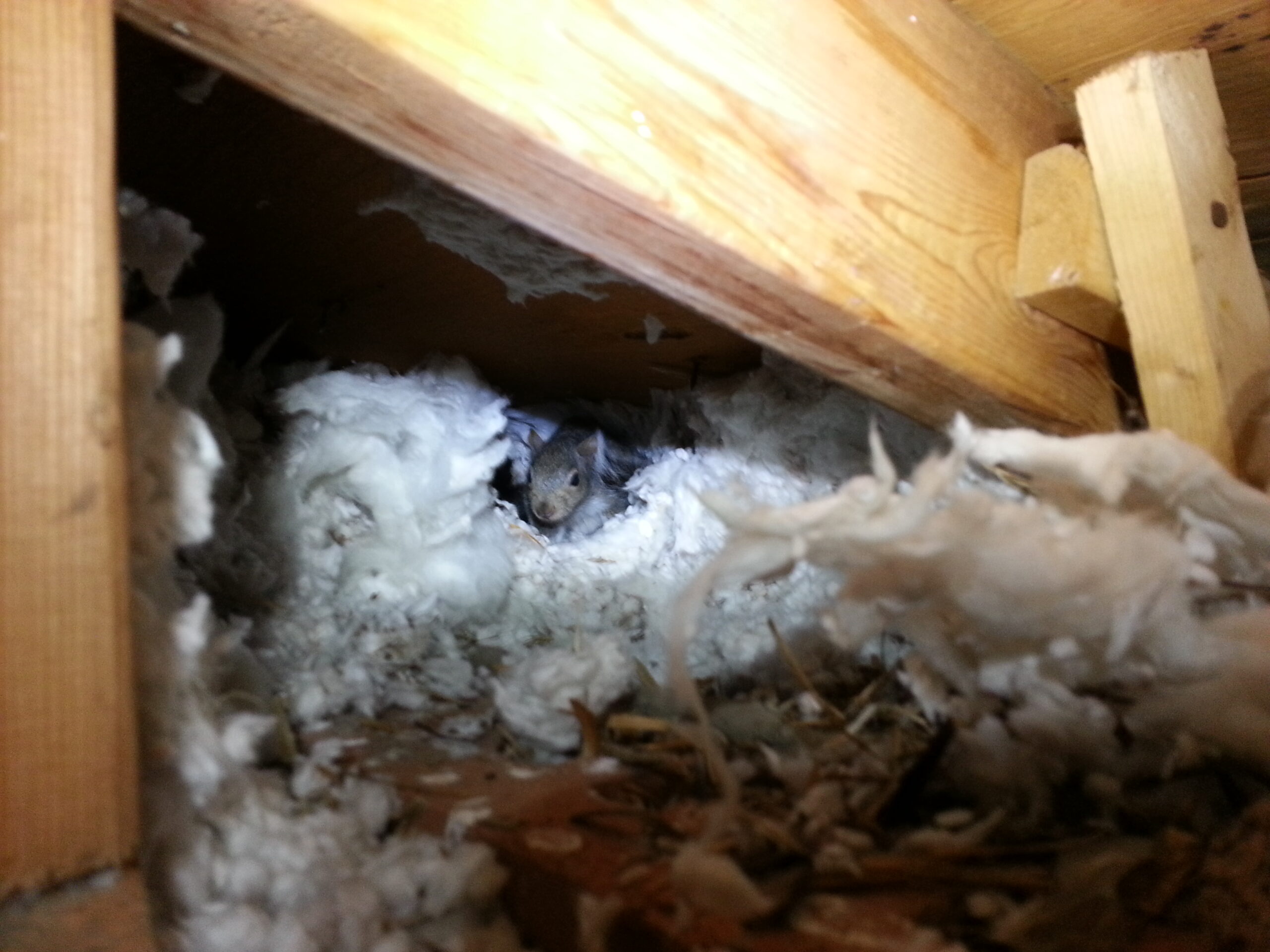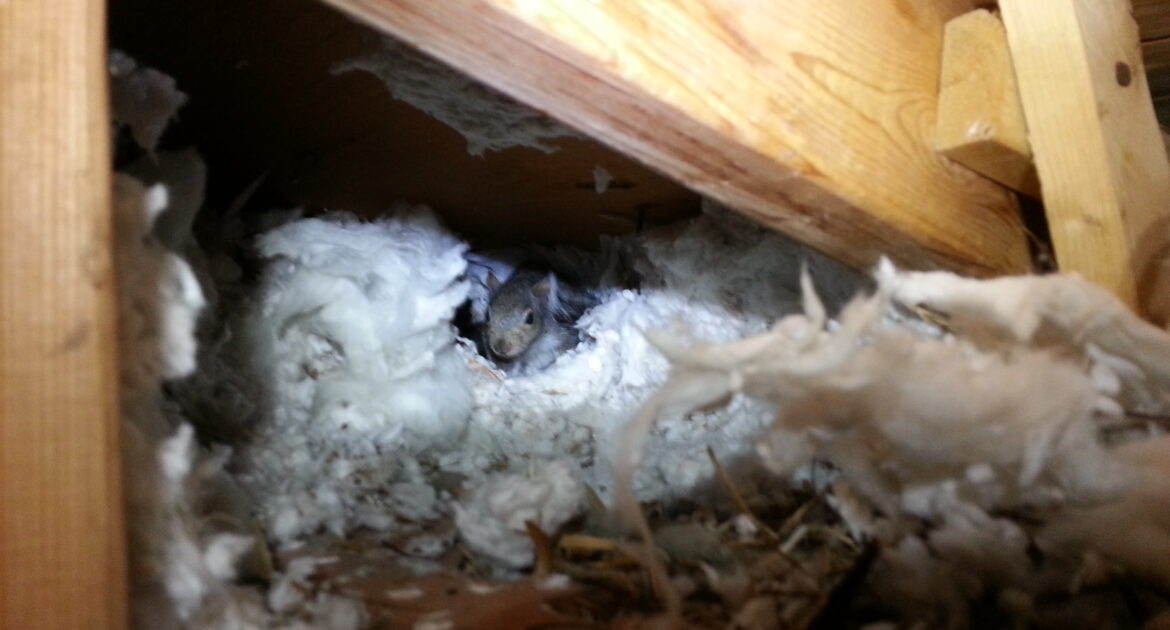Squirrels may seem harmless when spotted in your yard or perched on a tree branch, but they can become a significant problem once they find their way into your home. Squirrel-proofing your attic is one of the best ways to protect your home and prevent these agile rodents from causing damage. Some of the steps we will be discussing today include repairing and sealing gaps and decluttering.
By taking proactive steps, you can keep squirrels out and ensure your attic stays secure. Here’s how to prepare your attic effectively and safeguard your home against squirrel intrusion.
Why Squirrel-Proofing Your Attic Is Essential
Squirrels are persistent and resourceful animals. They’re excellent climbers and can easily access your roofline, vents, soffits, or chimneys to find their way inside. Once they infiltrate your attic, they can cause serious damage, such as:
- Chewing through insulation, wooden structures, and even electrical wiring, which increases the risk of fire hazards.
- Creating entry holes that allow water and other pests into your home.
- Leaving droppings and urine that can lead to unpleasant odors and health concerns.
Squirrels may also carry parasites like fleas and ticks, which can spread into your home and affect your family or pets. Beyond the physical and health risks, repairing squirrel-related damage can be expensive. By investing in squirrel-proofing your attic now, you’ll save on costly repairs and maintain the safety of your home.
Steps to Prepare Your Attic for Wildlife Prevention
Preparing your attic to prevent squirrels involves a combination of inspection, repairs, and reinforcement. Here’s a step-by-step guide to creating a space that deters squirrels and keeps wildlife out.
1. Conduct a Thorough Inspection
A careful inspection is the first step in identifying potential vulnerabilities. Look for entry points and damage where squirrels could easily squeeze through. Pay close attention to the following areas:
- Rooflines and eaves, where gaps often form.
- Vents, chimneys, and soffits, which can provide easy access.
- Cracks or holes in roofing materials or wooden structures.
- Overhanging tree branches that create a pathway to your roof.
Even small openings, as tiny as 2 inches, can allow squirrels to sneak inside. Check thoroughly to ensure every corner of the attic and roofline is accounted for.
2. Repair and Seal Gaps
After inspecting the attic, address any damage or openings immediately. Use durable materials that can withstand a squirrel’s sharp teeth and determination. Here are a few practical solutions:
- Seal cracks and gaps with heavy-duty caulking or use steel wool, which squirrels find difficult to chew through.
- Reinforce vents and soffits with strong materials such as galvanized steel mesh or hardware cloth.
- Close chimney openings using specially designed caps that still allow air to flow but keep wildlife out.
Avoid using lightweight materials like chicken wire, as it’s often insufficient for keeping squirrels away.
3. Declutter and Clean Your Attic
Squirrels are naturally drawn to cluttered spaces filled with nesting materials. Items like cardboard, fabric, and loose insulation make an attic the perfect space for building a nest. To reduce their interest:
- Remove unnecessary items and keep the space tidy.
- Use airtight containers for any stored belongings to make them inaccessible.
- Regularly vacuum or sweep up loose debris.
A clean and organized attic not only deters squirrels but also makes it easier to spot any signs of activity.
4. Deodorize After Wildlife Activity
If squirrels have previously been in your attic, it’s crucial to clean and deodorize the area. Squirrels are drawn to pheromones and scents left behind by others, making it more likely that new ones will try to enter. Use professional-grade cleaning products to remove these lingering odors and create a fresh, uninviting environment for wildlife.
Prevent Squirrels From Entering Your Home
While preparing your attic is crucial, prevention doesn’t stop there. A comprehensive approach to squirrel-proofing your home involves addressing outdoor factors that attract wildlife. Here are additional strategies to prevent squirrels from coming near your roofline:
1. Manage Food Sources
Squirrels are opportunistic feeders, and many common yard features serve as easy food sources. To discourage them:
- Remove bird feeders or use squirrel-proof designs that limit their access.
- Collect and dispose of fallen fruit from trees promptly.
- Secure garbage bins with tight-fitting lids to prevent wildlife scavenging.
By eliminating food sources close to your home, you make your property less appealing to squirrels.
2. Trim Overhanging Branches
Trees close to your home act as an easy bridge to the roofline. Squirrels often use branches to jump onto rooftops. To reduce this risk:
- Trim overhanging branches to maintain at least a 6-foot distance from your home.
- Regularly inspect trees for growth that could enable wildlife access.
- Remove dead or weakened limbs that could fall on your roof during storms, causing damage and creating easy entry points.
3. Keep Up with Maintenance
Regular maintenance is one of the most effective ways to prevent squirrel entry. It ensures your home remains in good condition and eliminates potential weak spots over time. Make sure to:
- Inspect your roof, attic, and vents at least twice a year for damage.
- Address any signs of wear or weather-related issues promptly.
- Repair wood rot, loose shingles, or deteriorating soffits before they worsen.
4. Install Squirrel-Proof Materials
Protecting key areas of your home with durable, wildlife-resistant materials can make a big difference. Consider using:
- Galvanized steel mesh to seal vents, soffits, and voids.
- Copper mesh or hardware cloth to reinforce areas prone to chewing.
- Chimney caps designed to keep animals out while maintaining ventilation.
Investing in the right tools and materials provides a long-term solution that stands up to determined squirrels.
Watch for Signs of Squirrel Activity
Even the most thorough squirrel-proofing methods may not completely eliminate attempts at intrusion. Stay vigilant and monitor your attic regularly for signs of squirrel activity, such as:
- Scratching, scurrying, or unusual noises during the day.
- Small droppings or urine stains.
- Chewing marks on wood, insulation, or wires.
- Nesting materials like twigs or shredded insulation.
If you notice any of these signs, act quickly to prevent further damage. Professional wildlife control services can help assess the situation and remove squirrels humanely.
Why Choose Skedaddle Wildlife Control
Squirrel-proofing your attic is often easier and more effective when handled by professionals. At Skedaddle Wildlife Control in Denver, we specialize in humane, eco-friendly solutions to wildlife challenges. Our comprehensive services include:
- Careful inspection of your home to identify vulnerabilities.
- Removal of squirrels and other wildlife using humane methods.
- Cleanup and deodorization of affected areas to discourage re-entry.
- Professional installation of wildlife-resistant materials tailored to your home’s needs.
With over 30 years of experience, we’re committed to providing long-lasting, effective solutions that protect your home and family.
Protect Your Home Today
Squirrel-proofing your attic isn’t just about preventing damage to your property—it’s about maintaining your peace of mind. By taking proactive steps to prepare your attic and address outdoor factors like food and tree access, you can safeguard your home and deter squirrels effectively.
For homeowners looking for expert wildlife prevention and removal services, Skedaddle Wildlife Control is here to help. Contact us today to learn more about how we can secure your home and ensure it stays free of unwanted wildlife.




